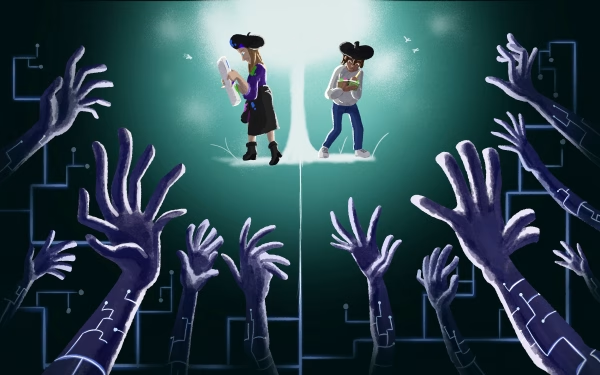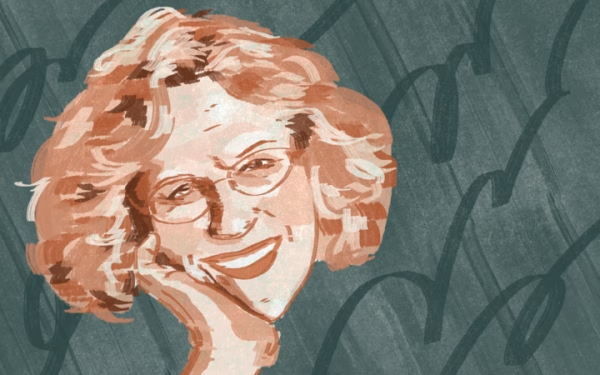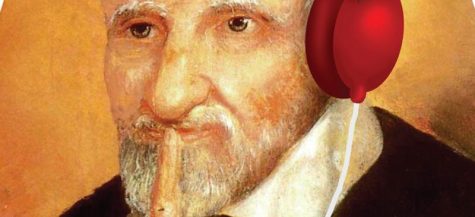’13 Reasons’ gets graphic in season two
Katherine Langford stars as Hannah Baker in the widely controversial Netflix original “13 Reasons Why,” based off the successful book by Jay Asher.
Note: This article contains spoilers for Seasons 1 and 2 of “13 Reasons Why,” as well as potentially triggering content.
Netflix’s “13 Reasons Why” debuted its second season May 18, amongst much fan anticipation. The series, based on Jay Asher’s 2007 novel of the same name, was one of the most discussed shows of 2017, with some praising it as an honest depiction of the struggles of adolescence and others condemning it as an exploitative, irresponsible portrayal of potentially triggering issues. With the new season debuting in the midst of Mental Health Awareness Month, many are wondering if “13 Reasons Why” can portray its intense subject matter in a more responsible way.
For those unfamiliar with “13 Reasons Why,” here’s a quick recap: The show follows Clay Jensen, whose friend and crush Hannah Baker has commited suicide prior to the beginning of the series. As the show opens, Clay receives a box of 13 tapes, which contain recordings of Hannah explaining why she chose to end her life; according to Hannah, each recipient of the tapes contributed to her death in some way. Season one dealt not only with Clay learning Hannah’s reasons to end her life, but the other recipients of the tapes dealing with guilt and personal traumas of their own, and Hannah’s grief-stricken parents attempting to file a lawsuit against their daughter’s high school for not properly supporting her. The first season dealt with several difficult topics including rape, stalking, bullying, and, of course, teen suicide.

Dylan Minnette stars as Clay Jensen, a close friend of Hannah’s who becomes determined to find out what happened to her.
One of the largest criticisms against the show was its choice to portray both Hannah’s rape and suicide on screen, with both scenes being incredibly graphic and unflinching. Executive producer Brian Yorkey defended the decision to showcase the content in such a way in a 2017 interview with “Entertainment Weekly,” stating, “In the case of the more traumatic events of the show, we felt a real responsibility not to look away from them.”
Certain viewers share Yorkey’s view of the show being a tragic, raw depiction of teenage tragedy. “The reason Hannah’s suicide is so tragic is because as an audience we realize how much she had to live for – everything and everyone outside of Liberty High that cared about her and the opportunities she had,” said 19-year-old film and television major Jon Knecht. “Overall, it is a story – a marvelous, tragic story.”
While the choice to depict such actions in their entirety certainly left an impact on viewers, experts argue that perhaps the impressionable teen fanbase of the show are putting themselves at risk for self-harm and suicide by watching the show, especially those already suffering from mental illness. According to “Recommendations for Reporting on Suicide,” a set of guidelines for depicting suicide in media created by suicide prevention experts, it is important to not sensationalize suicide, in order to prevent a string of “copycat suicides.” This rule coincides with another controversy plaguing the show: Many of the viewers see Hannah’s suicide as an act of calculated revenge, not a desperate attempt to escape a life she felt was not worth living.
“Hannah never went to anyone and said she was depressed and suicidal. Instead, she decided to have a princess complex and blame others for everything. She never directly asked for help,” said 18-year-old psychology major Risha Vaughn. “Suicide isn’t the solution and it isn’t the best way to get revenge on those that were mean to you, and the show paints it like it is.”
With all the controversy surrounding the show, viewers and critics alike are anxiously awaiting to see how the show will handle these issues in the second season.
The first episode has promise, with select actors from the show appearing in a pre-recorded segment warning viewers of the show’s mature content, advising those who may be particularly impacted to either watch with a trusted adult or not watch all. The second season also attempts to paint a more human picture of Hannah, acknowledging flaws in her character and how her suicide and the tapes ultimately hurt those who cared about her. Season two emphasizes that suicide is never a solution, with Hannah being revealed to have made a “13 Reasons Why Not,” while deciding how to proceed with her life following her rape. The show attempts to portray solidarity between its characters, with much of the main cast banding together to bring school bully and serial rapist Bryce Walker to justice.
However, the show falls back into its old tricks, with an offscreen suicide attempt occurring in the second episode, and the final episode unexpectedly portraying the brutal beating and rape of school outcast Tyler. The season ends with his subsequent attempt at revenge by bringing a loaded gun to a school dance, before being stopped outside the school by Clay. The rape scene in particular has garnered an intense backlash, with The Parents Television Council urging Netflix to cancel the show.
“I do believe that shows addressing sensitive topics need to treat the topic with respect and need to do extensive research into what exactly they are discussing,” said 20-year-old film and television major Mackenzie Costanzo. “If a show is centered around a particularly tough subject, the material needs to be as non-sensationalized as possible and should use the topic at hand as a platform for discussion and exploration rather than for exploitation and as a ploy for views.”
Despite an attempt to be more conscious of its impressionable audience, “13 Reasons Why” ultimately digs itself into a deeper hole than it began the season with. After showcasing graphic imagery to rival that of season one, the responses to the issues taken with the first season feel more like lip service to critics rather than a careful attempt for a more responsible program. With the second season’s critical response being as divisive as the first, there is no telling where “13 Reasons Why” is headed. If the show is to continue, hopefully it will be more considerate of its fans and create a program that does more help than harm.







